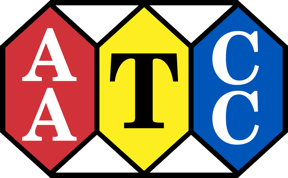Description
TEST METHODS ARE DELIVERED AS A LINK IN YOUR EMAILED RECEIPT.
AATCC TM185-2021 Test MEthod for Chelating AGent Content in Hydrogen Peroxide Bleach Baths: Copper PAN Indicator.
1. Purpose and Scope
1.1 This test method measures the chelating agent content in a hydrogen peroxide bleach solution.
1.2 The method is designed to permit routine or periodic titration of the peroxide saturator section of a plant preparation range, or other prepared peroxide bleach solutions, to determine the concentration of chelating agent present.
1.3 The method is restricted to chelating agents based on ethylenedianietetraacetic acid (EDTA), N-hydroxyethylenediamenetriacetic acid (HEDTA), and diethylenetriaminepentaacetic acid (DTPA). This includes any proprietary products (referred to herein as "product") containing possible multiple ingredients, one or more of which may be chelating agents.
2. Principle
2.1 The percent chelating agent or product in the hydrogen peroxide bleach bath is determined in two steps: first, a direct titration of the chelating agent or product using a known concentration of copper sulfate in the presence of an indicator (PAN, 1-(2-pyridylazo)-2-naphthol), and second, a similar titration of the bleach solution containing the chelating agent using a more dilute concentration of copper sulfate as the titrant.
Copyright American Association of Textile Chemists and Colorists, RTP, NC, USA. All rights reserved.
The above information is only a summary of the AATCC test method.
English
Spanish
Hindi
Chinese (Simplified)
Chinese (Traditional)
Japanese
Bengali
Korean
Telugu
Marathi
Punjabi
French
Polish
Arabic
Danish
Dutch
Persian
Portuguese
Latin
Vietnamese
Hebrew
Hungarian
Indonesian
Irish
Italian
Kannada
Mongolian
Romanian
Russian
Norwegian
Serbian
Sindhi
Swedish
Tamil
Turkish
Ukrainian
Urdu
